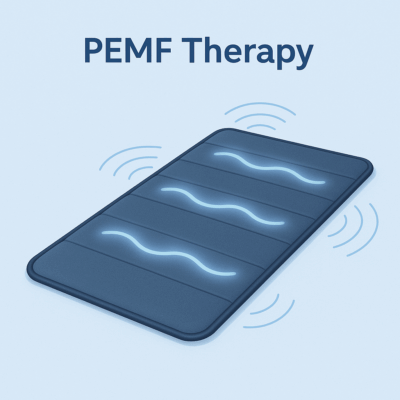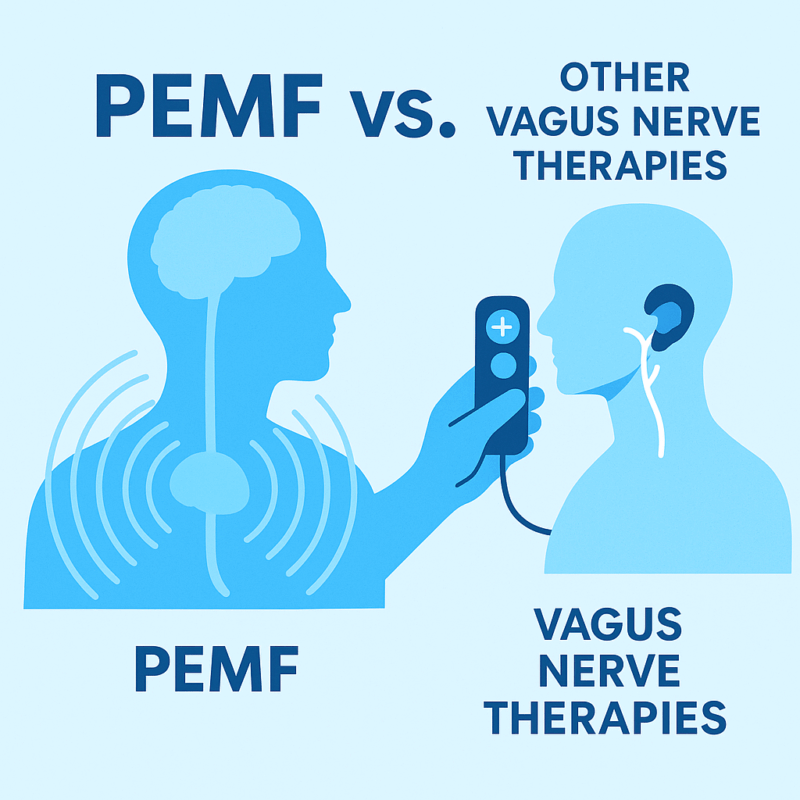
PEMF NeoSurround MAT
Why Every Wellness Routine Needs NeoSurround Mat In today’s fast-paced world, most of us are constantly searching for…

The vagus nerve is one of the most important communication highways in the body, connecting the brain with key organs. Stimulating it can help with stress regulation, relaxation, digestion, sleep, and even inflammation. But not all vagus nerve therapies are created equal. In this article, we’ll compare PEMF (Pulsed Electromagnetic Field) therapy to other vagus […]
The vagus nerve is one of the most important communication highways in the body, connecting the brain with key organs. Stimulating it can help with stress regulation, relaxation, digestion, sleep, and even inflammation. But not all vagus nerve therapies are created equal.
In this article, we’ll compare PEMF (Pulsed Electromagnetic Field) therapy to other vagus nerve (VN) devices — highlighting what makes PEMF both safer and more natural.
Table of Contents
Many vagus nerve stimulators on the market (for example, direct-current devices like Pulsetto) deliver electrical impulses directly to the skin and nerves. While this can provide stimulation, it also comes with potential drawbacks:
Skin irritation or discomfort
Tingling or unpleasant sensations
Limited area of stimulation (usually just the neck or ear)
By contrast, PEMF therapy uses electromagnetic fields — the same type of natural signals found in the earth’s magnetic field — to stimulate the vagus nerve indirectly and non-invasively. No skin irritation, no tingling — just a gentle cellular boost.
One of PEMF’s biggest advantages is that it is non-invasive and natural. The fields it generates are very similar to those we are exposed to naturally from the earth. Instead of forcing electrical currents into the body, PEMF gently supports the body’s own regulatory processes. This makes it a safe long-term solution for supporting vagus nerve activity without side effects.
Unlike surface-level VN devices, PEMF works at a cellular level. By stimulating cells to restore their natural voltage, PEMF improves:
Oxygen utilization
Energy (ATP) production
Nutrient transport
Waste removal
These processes together support a healthier metabolism and allow the body to self-regulate more effectively, including via the vagus nerve.
Most vagus nerve devices are local stimulators — targeting only one area, such as the ear or neck. PEMF therapy, on the other hand, can be applied to the whole body. While it influences the vagus nerve, it also stimulates other key systems and organs that are connected to vagal activity, offering a more comprehensive wellness approach.
Another key difference: PEMF has decades of research behind it, with hundreds of studies showing positive effects on pain, sleep, mood, and cellular health. Compared to many newer vagus nerve gadgets that are still in their early stages of clinical evaluation, PEMF is supported by a much stronger scientific foundation.
👉 You can read one of the latest research publications on PEMF and vagus nerve stimulation here.
While direct current vagus nerve devices may provide short-term stimulation, they come with limitations and potential side effects. PEMF stands out as a safer, more natural, and more holistic option — one that doesn’t just stimulate the vagus nerve, but supports the body’s entire healing and regulatory system.
If you’re considering vagus nerve therapies, ask yourself: Do I want to force stimulation, or do I want to support my body naturally from the inside out?
PEMF makes that choice clear.